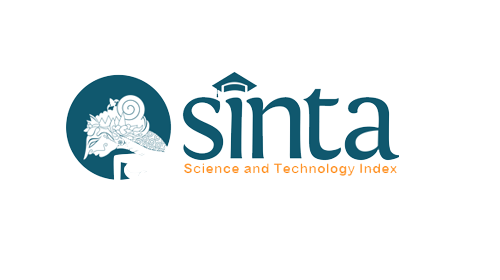The Relationship of Stimulation Implementation with Developmental Abilities in Pre-school Age Children
DOI:
https://doi.org/10.35568/healthcare.v6i1.4193Keywords:
Perkembangan, Pra Sekolah, StimulasiAbstract
Preschool period to be a conducive period for developing various kinds of abilities, intelligence, talents, physical, cognitive, language, emotional and spiritual abilities in children. One of the factors that has a big influence in supporting children's development is the stimulation factor. The purpose to analysis the relationship application of stimulation to the developmental abilities with pre-school children. The research design is quantitative with a correlational descriptive method using a cross sectional study approach. This research used 242 respondents who were mothers of pre-school children aged 48-72 months and who were actively participating in kindergarten education. The research results showed that the application of developmental stimulation had been carried out well in 51.2% of respondents. Children's developmental abilities, 62% of children have appropriate developmental abilities, 28.9% of children have doubtful developmental abilities and 9.1% of children have the possibility of deviations in their development. From the results of statistical tests using the chi square test, it was found that the value of p = 0.000 < α 0.05 was statistically significant, so there was a significant relationship between the application of child development stimulation to the developmental abilities of pre-school aged children.
Downloads
References
Aboud, F. E., & Yousafzai, A. K. (2019). Scaling up child psychosocial stimulation programmes for young children. In The Lancet Global Health (Vol. 7, Issue 3). https://doi.org/10.1016/S2214-109X(19)30018-X
Alwaely, S. A., Yousif, N. B. A., & Mikhaylov, A. (2021). Emotional development in preschoolers and socialization. Early Child Development and Care. https://doi.org/10.1080/03004430.2020.1717480
Cusick, S. E., & Georgieff, M. K. (2016). The Role of Nutrition in Brain Development: The Golden Opportunity of the “First 1000 Days.” Journal of Pediatrics, 175. https://doi.org/10.1016/j.jpeds.2016.05.013
De Araujo, L. B., Mesquita Novakoski, K. R., Campos Bastos, M. S., Mélo, T. R., & Israel, V. L. (2018). Characterization of the neuropsychomotor development of children up to three years old: The ICF model in the context of the Family Health Support Center. Brazilian Journal of Occupational Therapy, 26(3). https://doi.org/10.4322/2526-8910.ctoAO1183
Dulcan, M. K. (2021). Dulcan’s Textbook of Child and Adolescent Psychiatry. In Dulcan’s Textbook of Child and Adolescent Psychiatry. https://doi.org/10.1176/appi.books.9781615374809
Emmers, D., Jiang, Q., Xue, H., Zhang, Y., Zhang, Y., Zhao, Y., Liu, B., Dill, S. E., Qian, Y., Warrinnier, N., Johnstone, H., Cai, J., Wang, X., Wang, L., Luo, R., Li, G., Xu, J., Liu, M., Huang, Y., … Rozelle, S. (2021). Early childhood development and parental training interventions in rural China: A systematic review and meta-analysis. In BMJ Global Health (Vol. 6, Issue 8). https://doi.org/10.1136/bmjgh-2021-005578
Ericsson, I. (2017). Effects of increased physical education and motor skills acquisition on scholastic performance. Idrottsforum. Org, 1–20. https://idrottsforum.org/ericsson170907/?fbclid=IwAR0B5uq-h37dfIbL0ssSI8bihkp8IMkzX4oVPwIoj6nUzR0Lwsd5pL5DXVY
Hossain, S. J., Roy, B. R., Salveen, N. E., Hasan, M. I., Tipu, S. M. M. U., Shiraji, S., Tofail, F., & Hamadani, J. D. (2019). Effects of adding psychosocial stimulation for children of lactating mothers using an unconditional cash transfer platform on neurocognitive behavior of children in rural Bangladesh: Protocol for a cluster randomized controlled trial. BMC Psychology. https://doi.org/10.1186/s40359-019-0289-9
Kemenkes RI. (2014). Pemantauan pertumbuhan, perkembangan, dan gangguan tumbuh kembang anak. Berita Negara Republik Indonesia Tahun 2014 Nomor 1524, 15.
Kementerian Pemberdayaan Perempuan dan Perlindungan Anak dan Badan Pusat Statistik. (2019). Profil Anak Indonesia Tahun 2019. Kementerian Pemerdayaan Perempuan Dan Perlindngan Anak (KPPPA), 378. https://www.kemenpppa.go.id/lib/uploads/list/15242-profil-anak-indonesia_-2019.pdf
Legi, N. N., Rumagit, F., Montol, A. B., & Lule, R. (2015). Faktor Yang Berhubungan Dengan Keaktifan Kader Posyandu Di Wilayah Kerja Puskesmas Ranotana Weru. Gizido, 7(2).
Marhaeni Pudji Astuti, T., Tri Atmaja, H., Utara, S., Singkawang, K., & Barat, K. (2018). The Impact of The Use of Gadgets in School of School Age Towards Children’s Social Behavior in Semata Village Article Info. Journal of Educational Social Studies.
Mikhnovetskaya, I. (2021). Motivation, external stimulation, and behavior as indicators of the formation of relationships among older preschool children with down syndrome. Psychiatry, Psychotherapy and Clinical Psychology, 12(4). https://doi.org/10.34883/PI.2021.12.4.005
Ren, L., & Xu, W. (2019). Coparenting and Chinese preschoolers’ social-emotional development: Child routines as a mediator. Children and Youth Services Review. https://doi.org/10.1016/j.childyouth.2019.104549
Santrock, J. W. (2011). Masa Perkembangan Anak: Children. In 2.
Valovičová, L., Trníková, J., Sollárová, E., & Katrušín, B. (2020). Stimulation and development of intellectual abilities in preschool-age children. Education Sciences. https://doi.org/10.3390/educsci10020043
Wasenius, N. S., Grattan, K. P., Harvey, A. L. J., Naylor, P. J., Goldfield, G. S., & Adamo, K. B. (2018). The effect of a physical activity intervention on preschoolers’ fundamental motor skills — A cluster RCT. Journal of Science and Medicine in Sport, 21(7). https://doi.org/10.1016/j.jsams.2017.11.004
Worku, B. N., Abessa, T. G., Wondafrash, M., Lemmens, J., Valy, J., Bruckers, L., Kolsteren, P., & Granitzer, M. (2018). Effects of home-based play-assisted stimulation on developmental performances of children living in extreme poverty: A randomized single-blind controlled trial. BMC Pediatrics, 18(1). https://doi.org/10.1186/s12887-018-1023-0
Downloads
Published
Issue
Section
License
Copyright (c) 2024 The Author(s)

This work is licensed under a Creative Commons Attribution 4.0 International License.

















